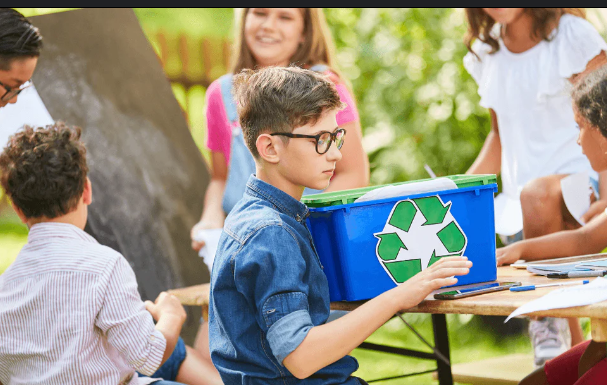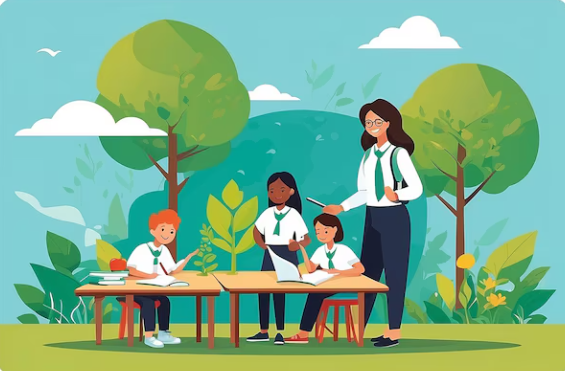As environmental concerns become increasingly urgent, fostering eco-literacy in students is crucial for preparing them to address sustainability challenges. Eco-literacy involves understanding how natural systems work, the impact of human activities on the environment, and the ways to promote a more sustainable future. Teaching students about sustainability through hands-on projects not only makes learning engaging but also instills practical skills and a deep sense of environmental responsibility. This guide explores the concept of eco-literacy, the importance of hands-on learning, and practical project ideas to integrate sustainability into education.
Understanding Eco-Literacy
Eco-literacy is more than just knowledge about the environment; it encompasses the ability to make informed decisions and take actions that contribute to environmental sustainability. It involves:

- Systems Thinking: Recognizing that the environment operates as a complex, interconnected system. Understanding how different components (air, water, soil, plants, animals) interact and influence each other.
- Sustainable Practices: Learning about ways to reduce waste, conserve resources, and use energy more efficiently. This includes understanding concepts like recycling, composting, and sustainable agriculture.
- Critical Thinking: Analyzing environmental issues critically and understanding the broader implications of human actions on the planet.
- Community Engagement: Being aware of local and global environmental issues and participating in activities that contribute to positive change.
The Benefits of Hands-On Learning
Hands-on learning, also known as experiential learning, involves engaging students directly in the learning process through activities that require active participation. This approach is particularly effective for teaching eco-literacy because:
- Increases Engagement: Students are more likely to be engaged and motivated when they are actively involved in projects rather than passively receiving information.
- Enhances Understanding: By working on real-world problems and seeing the direct impact of their actions, students gain a deeper understanding of environmental concepts and their relevance.
- Develops Problem-Solving Skills: Hands-on projects encourage students to think critically and creatively to solve environmental challenges.
- Fosters a Sense of Responsibility: Engaging in projects that have tangible outcomes helps students feel a personal connection to environmental issues and fosters a sense of responsibility towards sustainability.
Read More : The Harmful Effects of Mobile Phones: A Comprehensive Overview
Practical Hands-On Project Ideas for Teaching Sustainability
Here are some innovative and practical hands-on project ideas to teach students about sustainability:
- School Garden Projects:
- Description: Create a garden on school grounds where students can grow fruits, vegetables, and herbs.
- Learning Outcomes: Students learn about plant biology, soil health, and sustainable agriculture practices. They also gain practical skills in gardening and composting.
- Implementation: Start with a small plot and involve students in all stages, from planting seeds to harvesting. Incorporate lessons on organic farming, water conservation, and the importance of local food systems.
- Waste Audits and Reduction Campaigns:
- Description: Conduct a waste audit at school to analyze the types and amounts of waste generated. Use the findings to develop a waste reduction campaign.
- Learning Outcomes: Students learn about waste management, recycling, and the environmental impact of waste. They develop skills in data collection, analysis, and campaign planning.
- Implementation: Divide students into teams to sort and categorize waste. Use the results to create posters, presentations, and initiatives to reduce waste, such as composting programs and recycling drives.
- Energy Conservation Projects:
- Description: Monitor and analyze energy usage in the school and implement strategies to reduce consumption.
- Learning Outcomes: Students learn about energy efficiency, renewable energy sources, and the impact of energy use on the environment. They also gain skills in data analysis and project management.
- Implementation: Install energy meters to track usage, identify areas where energy is wasted, and propose solutions such as energy-efficient lighting or insulation improvements. Students can create presentations or reports on their findings and recommendations.
- Water Conservation Initiatives:
- Description: Investigate water usage and develop strategies to conserve water in the school and community.
- Learning Outcomes: Students learn about water cycles, conservation techniques, and the impact of water scarcity. They also develop skills in research, problem-solving, and community outreach.
- Implementation: Conduct water audits to measure consumption and identify leaks. Students can design and implement water-saving measures, such as low-flow fixtures, rainwater harvesting systems, or awareness campaigns.
- Biodiversity and Habitat Restoration Projects:
- Description: Participate in local habitat restoration efforts or create a mini-habitat on school grounds.
- Learning Outcomes: Students learn about local ecosystems, species conservation, and the importance of biodiversity. They also gain hands-on experience in restoration techniques.
- Implementation: Collaborate with local environmental organizations to restore natural habitats or create a wildlife-friendly garden with native plants. Students can monitor plant growth, track wildlife activity, and document changes over time.
- Sustainable Transportation Campaigns:
- Description: Promote sustainable transportation options, such as walking, biking, or carpooling, within the school community.
- Learning Outcomes: Students learn about the environmental impact of transportation and develop skills in advocacy and community engagement.
- Implementation: Organize events such as “Walk or Bike to School Day” and create educational materials on the benefits of reducing car use. Students can track participation rates and measure the impact on traffic and air quality.
- Eco-Friendly Product Design:
- Description: Design and create eco-friendly products or prototypes that promote sustainability.
- Learning Outcomes: Students learn about sustainable materials, product life cycles, and eco-design principles. They develop skills in creativity, design, and engineering.
- Implementation: Challenge students to create products using recycled or biodegradable materials. They can present their designs to peers and local community members, demonstrating the potential for sustainable innovation.
- Climate Change Awareness Projects:
- Description: Research and create awareness campaigns about climate change and its impacts.
- Learning Outcomes: Students learn about climate science, greenhouse gases, and the effects of climate change on ecosystems and communities. They develop skills in research, communication, and advocacy.
- Implementation: Students can create posters, videos, or social media campaigns to raise awareness about climate change. They can also organize school events or workshops to educate peers and the community.
- Sustainable Food Practices:
- Description: Explore sustainable food practices, such as organic farming, local sourcing, and reducing food waste.
- Learning Outcomes: Students learn about the environmental impact of food production and consumption. They gain practical skills in cooking, meal planning, and waste reduction.
- Implementation: Host cooking classes using locally sourced or organic ingredients and involve students in meal planning and preparation. Students can also track food waste and develop strategies to minimize it.
- Environmental Impact Research Projects:
- Description: Conduct research on a specific environmental issue and propose solutions or interventions.
- Learning Outcomes: Students develop research skills, critical thinking, and problem-solving abilities. They gain a deeper understanding of environmental issues and potential solutions.
- Implementation: Allow students to choose an environmental topic of interest, conduct research, and present their findings. This can include creating reports, presentations, or proposals for local action.
Integrating Hands-On Projects into the Curriculum

To effectively integrate hands-on sustainability projects into the curriculum, consider the following strategies:
- Cross-Disciplinary Approach: Incorporate sustainability projects across various subjects, such as science, social studies, and math. For example, students can use math skills to analyze data from a waste audit or study the scientific principles behind energy conservation.
- Project-Based Learning: Design projects that are inquiry-based and student-driven. Allow students to explore their interests and take ownership of their learning by guiding them through the project planning and implementation process.
- Community Involvement: Engage local organizations, businesses, and community members in sustainability projects. Collaborating with external partners can provide additional resources, expertise, and real-world connections.
- Assessment and Reflection: Assess students’ learning through presentations, reports, or reflective essays. Encourage students to reflect on their experiences and the impact of their projects, fostering a deeper understanding of sustainability.
- Scaffolding and Support: Provide guidance and support throughout the project process. Offer resources, workshops, and expert consultations to help students successfully complete their projects.
Challenges and Solutions
Implementing hands-on sustainability projects may present challenges, such as limited resources, time constraints, or lack of expertise. Here are some solutions to address these challenges:
- Resource Limitations: Seek grants, donations, or partnerships with local businesses to obtain necessary materials and resources. Utilize existing school facilities and collaborate with community organizations for support.
- Time Constraints: Integrate projects into existing curricula and align them with academic standards. Use project-based learning as a way to achieve multiple learning objectives simultaneously.
- Lack of Expertise: Leverage community experts, environmental organizations, and online resources to provide additional knowledge and support. Consider professional development opportunities for teachers to enhance their understanding of sustainability topics.
Conclusion

Teaching students about sustainability through hands-on projects is an effective way to foster eco-literacy and instill a sense of environmental responsibility. By engaging students in practical, real-world activities, educators can help them understand the complexities of environmental issues, develop critical thinking skills, and take meaningful actions towards a sustainable future.
Hands-on projects not only enhance students’ learning experiences but also empower them to become active contributors to environmental stewardship. As we face increasing environmental challenges, equipping students with the knowledge and skills to address these issues is more important than ever. By incorporating sustainability into education through engaging and practical projects, we can inspire the next generation of environmental leaders and create a more sustainable world.
ChatG

Leave a comment